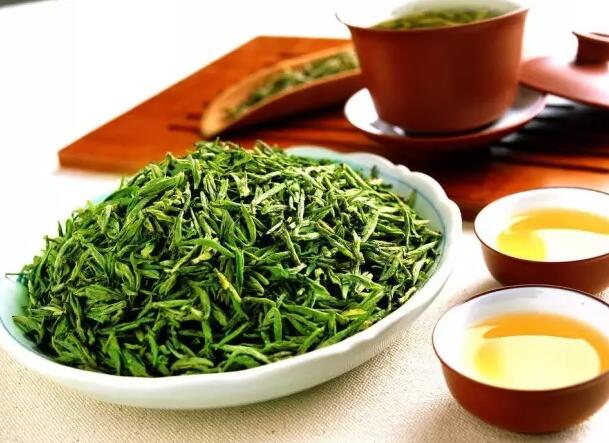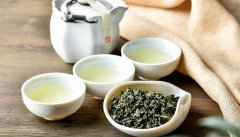What kind of tea is Kungfu Tea? What kind of tea does Kungfu Tea usually make? Kungfu Tea's correct brewing method
What is Kung Fu Tea? Chinese tea ceremony. Gongfu tea. In the West, we all have a meaning behind these phrases. For most of us, when we hear about the Chinese tea ceremony, we get the same impression. a gaiwan or Yixing teapot filled with tea leaves. In addition, some small teacups, a tea set tea table and a tea pet. In fact, when we hear Kung Fu tea, most of us have the same image in our minds. The Chinese tea ceremony is almost comparable to American Chinese food. Is Chinese food in America the same as what you eat in China? No. The same goes for Chinese tea ceremonies. In China, not everyone has what we are talking about now. Moreover, modern kungfu is not purely Chinese. To clarify the history of kungfu tea, there is no doubt that the original form of kungfu tea originated in China. Specifically, the origin of kung fu tea can be traced back to Chaozhou City in Guangdong Province in southeastern China. Today, however, after years of travel and development, what we commonly call kungfu tea is a melting pot of tea ceremonies in China, Japan and Taiwan. Although tea originated in China, it was brought to Japan by Japanese Buddhist monks in the 7th century. After observing the tea culture of Chinese temples, they concluded that this brewed tea has undeniable health properties. Monks brought tea seeds back to Japan and planted them on temple land. In the centuries that followed, the drink was primarily for health. Especially in the elite class, there are fewer people who drink occasionally. It was not until the 16th century that tea began to develop as an art form in Japan. Moreover, tea was not widely used until the 18th century.

The situation in Taiwan is slightly different. Tea was not brought to Taiwan until the late 18th century. Recently. Chinese tourists mainly bring tea seeds to reproduce after seeing that Taiwan has ideal soil and weather conditions for growing tea. Especially oolong tea. The main purpose is to grow tea plantations and educate Taiwanese locals in the art of tea production. The finished product is then exported to China. Naturally, tea culture began to develop on its own. Now, Taiwan has some of the best quality oolong tea. As well as its own form of tea ceremony, which was greatly influenced during the Japanese occupation. In Taiwan, people began to call the act of drinking tea "tea ceremony"-tea ceremony. Chaozhou Tea In China, kung fu tea is considered a regional activity rather than a national one. People who have the opportunity to go to Chaozhou or Wuyi Mountain are sometimes lucky enough to experience this way of drinking tea. They would write it down, emphasizing that it was a practice not seen in other parts of China, or even in surrounding areas. However, it should be noted that even for Chaozhou locals, the way of drinking tea with kung fu has never become the standard. This is a practice appreciated mainly by tea connoisseurs. When studying Chinese tea literature in the early 20th century, kungfu tea is only briefly mentioned. At the same time, there are many other areas of China tea custom. It would be a bit out of place to assume that kung fu has always been part of Chinese national identity. The rise of kung fu tea, or tea ceremony, often associated with the modern kung fu tea ceremony, was first mentioned in Taiwan in the 1970s. At this time, Taiwanese locals established so-called "tea houses." Literally translated as tea house. These are tea houses and teahouses where people come to enjoy quiet tea. Everything was done in a quiet atmosphere. The tea master will choose high quality tea and beautiful tea sets. In addition, there are beautiful works of art on the walls. This is a major shift from tea houses in Taiwan and China before the 1970s. Those noisy places are mainly used for smoking, gambling and other illegal activities. It took the earliest tea pioneers a while for the public to separate the two styles of tea houses. Alas, it hasn't always been an easy ride. Tea pioneers worked hard to bring a new reputation to tea drinking. At the same time, it has gained great influence and inspiration from Japan's long-standing tea ceremony tradition. Although tea originated in China, there has never been a simple form of tea ceremony that deserves to be cherished and practiced for many years. This is an important factor that differentiates us from Japan. In Japan, with the beginning of Morino Rikyu's legacy, the Japanese tea ceremony has been preserved for centuries. Even today, there are still schools in Japan that teach students the original teachings of Sennori Hugh. Why did Chaozhou Kungfu Tea become the basis of tea art? In the 1970s and 1980s, tea lovers in Taiwan actively sought a basis for Chinese tea drinking that could rival the aesthetics of the Japanese tea ceremony. In fact, in other parts of China, people mostly drink tea "Western-style"(as we now call it), with large teapots and large cups. Not many people pay attention to the art of making tea itself. Chaozhou kungfu tea is the only tea ceremony whose complex nature can be compared with that of Japan. However, although Chaozhou tea making can accurately describe the tea making method, it rarely mentions the positioning of the tea set and the overall atmosphere of the surrounding environment. This is a big difference from the very precise and somewhat rigid teachings of the Japanese tea ceremony.
Important Notice :
前街咖啡 FrontStreet Coffee has moved to new addredd:
FrontStreet Coffee Address: 315,Donghua East Road,GuangZhou
Tel:020 38364473
- Prev
How many grams of tea does Kungfu Tea put in Chaoshan? a detailed explanation of the correct eight-step method of making Chaoshan kungfu tea
Chaozhou in Guangdong Province is a charming region in China with a mountain of tea traditions. Chaozhou, close to Fenghuang Mountain, is the birthplace of fragrant Dancong Oolong. There, tea trees grow semi-wildly at high elevations, surrounded by fragrant orchards. The Chinese tea ceremony Kungfu Tea originated in Chaozhou in the Song Dynasty. Even today, the province
- Next

Which is better, Tieguanyin or Longjing? Who tastes better? What is the price of authentic Tieguanyin?
A brief discussion on the History of Tieguanyin Oolong Tea Tieguanyin is also called Tieguanyin and Tieguanyin. It originated in Anxi in southern Fujian during the Qing Dynasty (1644-1911). Anxi is an ancient tea producing area. The tea industry there can be traced back to hundreds of years ago, and ancient tea trees are often found, some of which are more than 1000 years old. However, these wild trees show the rich tea calendar in the area.
Related
- Why are the coffee in some coffee shops not enough after being frozen? What should I make up for my American latte cappuccino coffee after being frozen?
- How much water does it take to steam coffee by hand? Why is the coffee brewing and steaming time 30 seconds? What is the purpose of steaming coffee?
- The suspected drink contains too much caffeine! Overlord Tea Lady responds urgently!
- Starbucks rejects antique paper coupons?! Netizen: Missed marketing opportunities!
- What ratio of water temperature and ground does the smart cup method use to press coffee? The difference between brewed coffee and filtered coffee?
- What is the standard process for the purpose of coffee cup testing? What is the difference between hand-brewed coffee and cup testing?
- How to use hand-brewed coffee paragon small golden balls? How does cold coffee lock in the aroma of coffee?
- Is American coffee black? What is the difference between American coffee and drip coffee?
- Unexpected! Well-known tea beverage brand Lele Tea will withdraw from the Zhengzhou market!
- Starbucks enters the fashion and beauty industry?! Netizen: Give me an ice American eye cream

